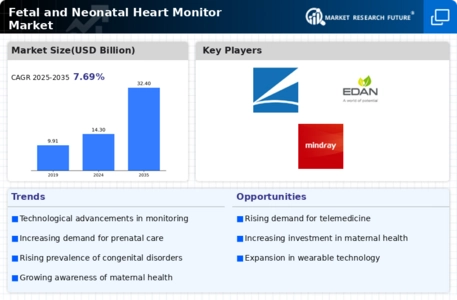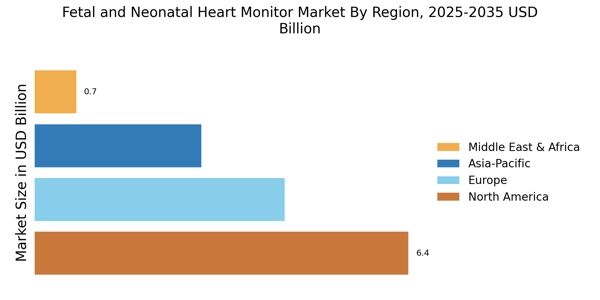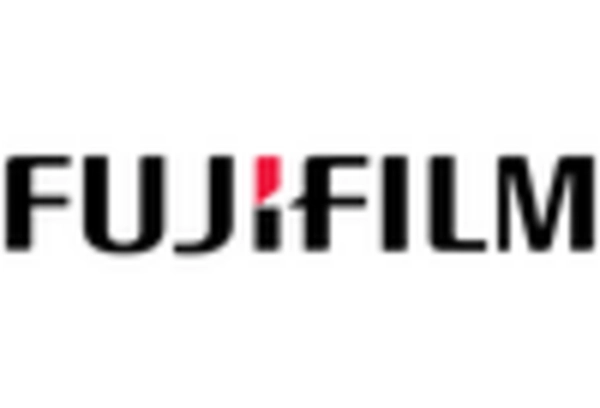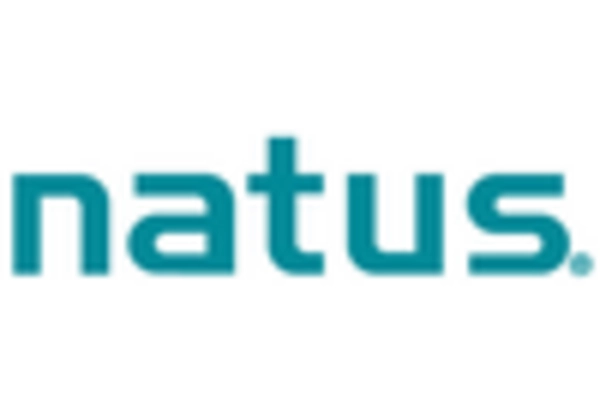Government Initiatives and Funding
Government initiatives and funding aimed at improving maternal and child health are crucial drivers for the Fetal and Neonatal Heart Monitor Market. Various countries have implemented programs to enhance healthcare access and quality for mothers and newborns. These initiatives often include financial support for hospitals to acquire advanced monitoring technologies. For instance, funding for maternal health programs has been allocated to ensure that healthcare facilities are equipped with the necessary tools to monitor fetal and neonatal health effectively. As a result, the demand for fetal and neonatal heart monitors is likely to increase, as healthcare providers seek to comply with new regulations and standards. This supportive environment fosters growth within the Fetal and Neonatal Heart Monitor Market, encouraging innovation and the development of new products.
Rising Incidence of Preterm Births
The rising incidence of preterm births is a critical driver for the Fetal and Neonatal Heart Monitor Market. According to recent data, approximately 15 million babies are born preterm each year, which represents a significant portion of neonatal care cases. This trend necessitates advanced monitoring solutions to ensure the health and safety of these vulnerable infants. As healthcare providers increasingly recognize the importance of early detection and intervention, the demand for fetal and neonatal heart monitors is likely to grow. Enhanced monitoring technologies can provide real-time data, enabling timely medical responses that could potentially improve outcomes for preterm infants. Consequently, the Fetal and Neonatal Heart Monitor Market is expected to expand as hospitals and clinics invest in these essential monitoring devices.
Rising Birth Rates in Developing Regions
Rising birth rates in developing regions are contributing to the expansion of the Fetal and Neonatal Heart Monitor Market. As populations grow, the demand for maternal and neonatal healthcare services intensifies. In many developing countries, there is a pressing need for improved healthcare infrastructure, including the availability of monitoring devices. The increasing number of births necessitates the implementation of effective monitoring solutions to ensure the health of both mothers and infants. Healthcare providers in these regions are increasingly recognizing the importance of investing in fetal and neonatal heart monitors to enhance care quality. This trend is likely to drive market growth, as manufacturers respond to the needs of these emerging markets by developing cost-effective and efficient monitoring solutions tailored to local requirements.
Technological Innovations in Monitoring Devices
Technological innovations play a pivotal role in shaping the Fetal and Neonatal Heart Monitor Market. The introduction of advanced features such as wireless connectivity, cloud-based data storage, and artificial intelligence algorithms enhances the functionality of monitoring devices. These innovations allow for continuous monitoring and remote access to vital signs, which is particularly beneficial in neonatal intensive care units. The market has witnessed a surge in demand for devices that offer improved accuracy and user-friendly interfaces. As healthcare systems strive to adopt cutting-edge technologies, the Fetal and Neonatal Heart Monitor Market is likely to experience robust growth. The integration of these technologies not only improves patient care but also streamlines clinical workflows, making them indispensable in modern healthcare settings.
Increasing Awareness of Maternal and Infant Health
Increasing awareness of maternal and infant health is significantly influencing the Fetal and Neonatal Heart Monitor Market. As educational campaigns and healthcare initiatives promote the importance of prenatal care, more expectant mothers are seeking regular monitoring to ensure the well-being of their babies. This heightened awareness has led to a greater emphasis on the use of fetal and neonatal heart monitors during pregnancy and after birth. Healthcare providers are more inclined to recommend these devices as part of routine check-ups, thereby driving market demand. Furthermore, the focus on reducing maternal and infant mortality rates has prompted governments and organizations to invest in better healthcare infrastructure, which includes the procurement of advanced monitoring equipment. This trend is expected to bolster the Fetal and Neonatal Heart Monitor Market in the coming years.


















Leave a Comment